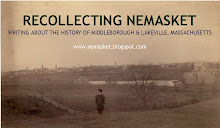.
In 1885, Superintendent Morss remarked upon the disconnect between the study of geography and history. “These two subjects, as too commonly taught, seem to have no connection with each other; but taught as they should be, they really belong together, and should form a part of the supplementary reading.”
History remained an important topic of study, and each grade from 4 through nine had its own texts for American and New England history. Added to this were “poems and prose selections of a historical nature” which were studied. Among these were “America: and the “Star- Spangled Banner”, "The Midnight Ride of Paul Revere" and “Barbara Frietche."
Later, American History was removed from the 4th and 5th grade curriculum and not introduced until the 6th grade, when it was taught “by means of readings and talks.” The text adopted was Goodrich’s Child’s History and the Eclectic Primary History. The subject was repeated each year in increasingly greater detail.
All lessons to be given by topics and a more minute study of what has been taken during the two preceding years [6th and 7th grades]. We hope and expect by this method to have the general facts of history in mind at the end of the sixth and seventh grades, and to be thoroughly conversant with United States History at the close of the Grammar school course.
Progress in the teaching of history (as well as geography) was considered hampered by the lack of suitable supplementary reading, and Superintendent Fitts in 1887 urged this matter be considered.
Local history was taught beginning in 1909, when the schools were given copies of Thomas Weston’s History of the Town of Middleboro, Massachusetts and a course of study for 7th, 8th and 9th graders in local history was developed. The course quickly proved “one of the most interesting in our school curriculum” and would be maintained for years at various grade levels.
As with geography, history saw less attention given it once the Green School became devoted to the first two primary grades.
One important accompaniment of history studies was the teaching of civics. For years, civics would remain a strong component of local schoolwork as required by state law which required that the last school day preceding Memorial Day be devoted to "exercises of a patriotic nature." Washington's Birthday and Flag Day also became key days when civics were emphasized and frequent student pageants were held.
Subscribe to:
Post Comments (Atom)













+-+Copy.jpg)

+of+Smoky+Mountains+018.jpg)
No comments:
Post a Comment